Namaqua Burrower
A large scorpion up to 13 cm with the tail extended. It is black with yellow legs and brown pincers with black tips. Males have longer pincers than females.
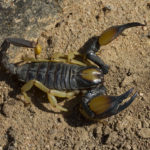
A large scorpion up to 13 cm with the tail extended. It is black with yellow legs and brown pincers with black tips. Males have longer pincers than females.
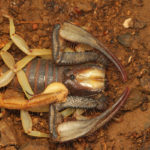
A large scorpion of around 10 cm with the tail extended. It is dark brown to black in colour with light yellow legs and tail. The head is pale yellow from the eyes to the mouth parts. The pincers are usually pale brown or yellow with black tips.
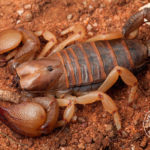
A large scorpion of around 12 cm with the tail extended. It is dark brown to light brown and even dark orange/yellow in colour with light yellow legs. The head is usually light brown in colour. The pincers are pale brown with dark tips.
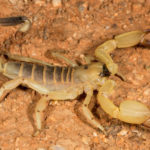
A large scorpion of around 11 cm with the tail extended. It is usually yellow with a dark back and a lighter tipped stinger. This species is often glossy in appearance.
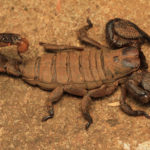
A medium sized scorpion of around 7 cm with the tail extended. It is dark brown to black, but usually has a muddy appearance from the dirt. Pincers are rounded, rough and darker than the body and the legs and tail tip are often lighter than the body.
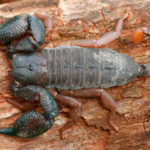
A large scorpion of around 10 cm with the tail extended. This species is pitch black usually with orange or yellow legs and stinger. It has large black pincers.
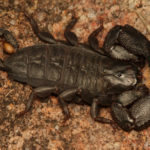
A medium sized scorpion of around 9 cm with the tail extended. It is black in colour, but often with a muddy appearance. It sometimes has lighter coloured legs and a lighter tipped tail.
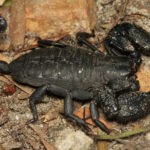
A medium sized scorpion of around 9 cm with the tail extended. It is a shiny black in colour with rough pincers. It is common across its range, occurring under rocks, bark and other surface debris often found close to the coast.
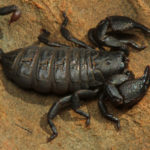
A medium sized scorpion of around 9cm with the tail extended. This species is pitch black but may have a brown appearance due to mud or dirt. It is a burrowing species with large pincers and a small tail.
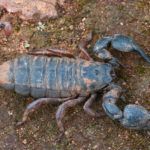
A medium sized scorpion up to 9 cm with the tail extended. This species is black, often appearing brown due to dirt. It can have yellow legs.

Join our WhatsApp Channel for free information about snakes & snakebite as well as notifications of our latest specials!
Want to attend the course but can’t make it on this date?
Fill in your details below and we’ll notify you when we next present a course in this area:
Want to attend the course but can’t make it on this date?
Fill in your details below and we’ll notify you when we next present a course in this area:
Want to attend the course but can’t make it on this date?
Fill in your details below and we’ll notify you when we next present a course in this area:
Want to attend the course but can’t make it on this date?
Fill in your details below and we’ll notify you when we next present a course in this area:
Want to attend the course but can’t make it on this date?
Fill in your details below and we’ll notify you when we next present a course in this area:
Want to attend the course but can’t make it on this date?
Fill in your details below and we’ll notify you when we next present a course in this area:
Want to attend the course but can’t make it on this date?
Fill in your details below and we’ll notify you when we next present a course in this area:
Want to attend the course but can’t make it on this date?
Fill in your details below and we’ll notify you when we next present a course in this area:
Want to attend the course but can’t make it on this date?
Fill in your details below and we’ll notify you when we next present a course in this area:
Before you download this resource, please enter your details:
Before you download this resource, would you like to join our email newsletter list?